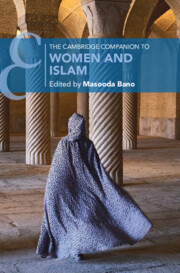Book contents
- The Cambridge Companion to Women and Islam
- Cambridge Companions to Religion
- The Cambridge Companion to Women and Islam
- Copyright page
- Contents
- Contributors
- Preface
- A Note on Foreign-Language Words
- Introduction
- Part I Logic of Classical Reasoning
- Part II Asserting Agency in Faith
- Part III Asserting Agency in Socio-Political Life
- 11 Patrons of Art, Architecture, and the Urban Environment
- 12 Women and Political Authority
- 13 Women as Social Activists
- 14 Poets and Writers
- 15 ‘Feminist Spirituality’ as Lived Religion
- Volume Bibliography
- Index
- Cambridge Companions To … (continued from page ii)
- References
11 - Patrons of Art, Architecture, and the Urban Environment
from Part III - Asserting Agency in Socio-Political Life
Published online by Cambridge University Press: 12 April 2025
- The Cambridge Companion to Women and Islam
- Cambridge Companions to Religion
- The Cambridge Companion to Women and Islam
- Copyright page
- Contents
- Contributors
- Preface
- A Note on Foreign-Language Words
- Introduction
- Part I Logic of Classical Reasoning
- Part II Asserting Agency in Faith
- Part III Asserting Agency in Socio-Political Life
- 11 Patrons of Art, Architecture, and the Urban Environment
- 12 Women and Political Authority
- 13 Women as Social Activists
- 14 Poets and Writers
- 15 ‘Feminist Spirituality’ as Lived Religion
- Volume Bibliography
- Index
- Cambridge Companions To … (continued from page ii)
- References
Summary
D. Fairchild Ruggles reviews the role Muslim women have played as patrons of art, architecture, and the urban environment. The chapter presents case studies from various regions and time periods, highlighting the diverse motives and reasons behind these acts of patronage.
- Type
- Chapter
- Information
- The Cambridge Companion to Women and Islam , pp. 267 - 295Publisher: Cambridge University PressPrint publication year: 2025

